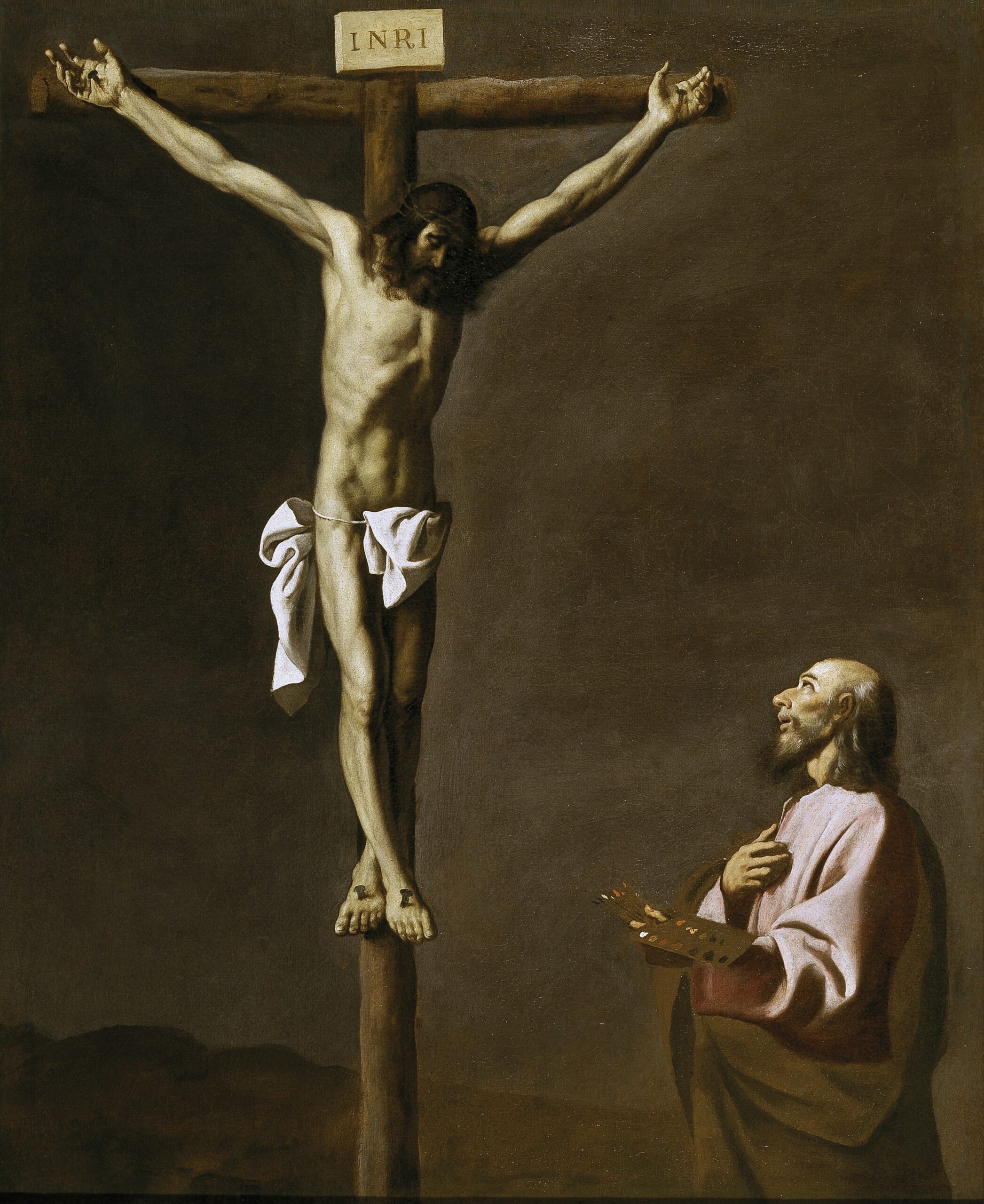
“The Crucified Christ with a Painter”, Francisco de Zurbarán, c.1650, Prado, Madrid.
A painter looks at Christ as he hangs on the cross. But there is nothing in the painting to suggest a particular time or place. At the bottom there is a suggestion of a distant hill, but there is no other background detail. Zurbarán puts questions to us about what is real. Is the painter having a vision of the crucified Christ? Or is this a polychrome sculpture which the painter had just finished? Zurbarán paints a strong light falling on the figure of Christ. It falls on the loincloth giving it a very definite three dimensional quality. Realistic painted sculptures were very popular in Spanish religious art at the time and many artists first trained as painters of these wooden sculptures before ever putting a brush to canvas. Here the artist is shown looking with devotion towards the figure of Christ. This artist looks real enough. But he holds a pallet loaded with paint in his hand! Painted paint! Is this painting showing us an artist having an intense religious experience or an artist who has finished his polychrome sculpture and now looks at it with devotion or pride or both? Perhaps Zurbarán wants us to understand that the skill of the artist and his devotion are not distinct drives within himself. It could be a statement of his own faith. But it is not a self-portrait ,as was once thought. This is intended to be St Luke, who tradition said was a painter. Zurbarán would have been aware of the tradition that St Luke painted, not just Our Lady and the child Jesus, but also Jesus on the cross. Notice that the figure has a nail driven through each foot and not just one nail through both. This way of showing the crucifixion goes back to Dürer, but had become very common in Seville by the time of Zurbarán. In his “Arte de la Pintura” (1649) the Spanish writer Pacheco mentions the celebrated sculpture of the crucified Christ at Sirol near Ancona in Italy, which was believed to have been painted by St Luke and which showed Christ’s feet nailed to the cross with two nails rather than one. It is known that Zurbarán himself had been commissioned to carve and polychrome a crucifixion for a Mercedarian monastery near Llerena in 1624. But nothing is known for sure about the circumstances of this particular commission. We celebrate the Feast of St Luke on Friday.
The Catholic Chaplaincy serves the students and staff of the University of Edinburgh, Edinburgh Napier University and Queen Margaret University.
The Catholic Chaplaincy is also a parish of the Archdiocese of St Andrews and Edinburgh (the Parish of St Albert the Great) and all Catholic students and staff are automatically members of this parish.